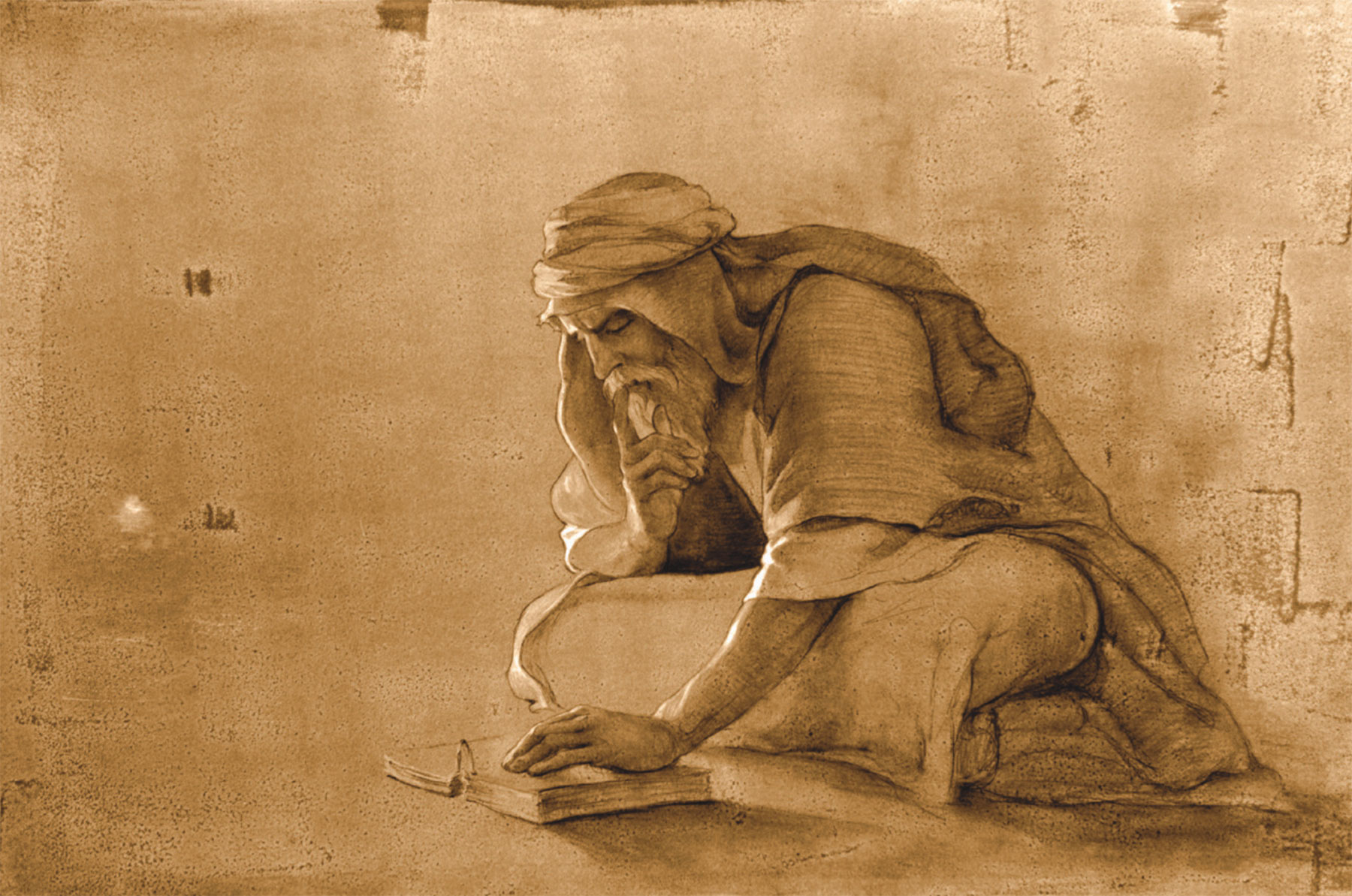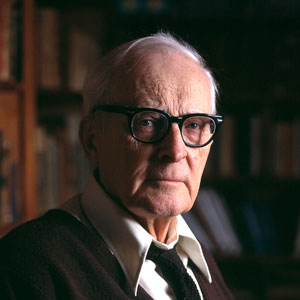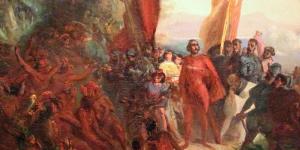You are here
Did Lehi Use the Poetry of the Ancient Bedouin?

1 Nephi 2:9–10
The Know
After serving in World War II, Hugh Nibley began his remarkable career as a professor of ancient languages and scripture at Brigham Young University. As an intelligence officer in the U.S. Army, he had become fascinated with cultures of all kinds, including Arabic and other Middle Eastern societies.
In 1950, Nibley published a series of articles in the main LDS Church magazine, The Improvement Era. In this series, Hugh compared many points of culture, social customs, and language found in the first forty pages of the Book of Mormon with practices found among the Bedouin tribes of the Middle East.1 Lehi and his family, like the Bedouins, were in the desert. It takes a lot to survive in the Arabian deserts, as Nibley and American military leaders had experienced in their campaigns especially in Egypt and the rest of North Africa.
As part of his “Lehi in the Desert” series, Nibley suggested many compelling comparisons between Lehi and the Arabs. He found Lehi’s words and dream images to be at home with the traits and characteristics of the model sheikh of the desert. The importance of dwelling in tents, and the rigors of travel, the problems with baggage and food, avoiding strangers, family dynamics, naming places, and especially the joy at the sight of water were all part of the fabric of the experience of these desert travelers.
In a culminating comparison, Nibley the linguist was at his best when he detected and explored distinctive features of early Arabic poetry as practiced by the Bedouin of the Arabian Desert.2 His study identified and described six, later split into seven, commonly occurring components of desert poetry, which were “demanded of the true and authentic poet of the earliest period.”3 These components are described as follows:
- They are Brunnen[lieder] or Quellenlieder, as the Germans call them, meaning songs inspired by the sight of water gushing from a spring or running down a valley.
- They are addressed to one or (usually) two traveling companions.
- They praise the beauty and excellence of the scene, calling it to the attention of the hearer as an object lesson.
- The hearer is urged to be like the thing he beholds.
- The poems are recited extempore or on the spot and with great feeling.
- They are very short, each couplet being a complete poem in itself.
- One verse must be followed by its “brother,” making a perfectly matched pair.4
All of these seven components are beautifully and exquisitely met by Lehi’s poetic exhortations to his two oldest sons, Laman and Lemuel in 1 Nephi 2:9–10, which reads:
And when my father saw that the waters of the river emptied into the fountain of the Red Sea, he spake unto Laman, saying,
“O that thou mightest be like unto this river,
continually running into
the fountain of all righteousness!”And he also spake unto Lemuel,
“O that thou mightest be like unto this valley,
firm and steadfast and immovable in
keeping the commandments of the Lord!”5
Here, Lehi: (1) sees that the river running through the valley empties into the sea, (2) addresses two of his sons traveling with him, (3) makes the majesty of the scene an object lesson for them, (4) urges them to be like the river and valley, (5) appears to give the poetic advice on the spot, (6) each verse is concise and can stand as complete on its own, and (7) pairs together two perfectly balanced couplets, directed at brothers, no less. Thus, Lehi’s poetry shares all seven features with Arabic poetry noted by Nibley.
The Why
When he first published his study in 1950, Nibley marveled, “There is no more surprising or impressive evidence for the genuineness of the Book of Mormon than the eloquent little verses … which Lehi on one occasion addressed to his wayward sons.”6
While this initial enthusiastic response was modestly tempered somewhat in later editions,7 Nibley nonetheless remained rightly impressed: “Here we have beyond any doubt all the elements of a situation of which no westerner in 1830 had the remotest conception. Lehi stands before us as something of a poet, as well as a great prophet and leader, and that is as it should be.”8
Nibley concluded: “It would have been quite as impossible for the most learned man alive in 1830 to have written the book as it was for Joseph Smith.”9
While the available Arabic poetry studied by Nibley comes from a later time period and has several other features not found in the Book of Mormon, the shared attributes between Lehi's words and the prevailing practices among the Bedouins may point to a common geographic background, if not to a connected literary origin.
Moreover, it should not go unnoticed here that Lehi may have also been drawing upon his knowledge, as a prophet, of the words of Isaiah. In Isaiah 48:18, the Redeemer of Israel cries out: “O that thou hadst hearkened to my commandments—then had thy peace been as a river, and thy righteousness as the waves of the sea.” Lehi, seeing the valley with its safe walls and small river running into the Red Sea, where he and his family had taken shelter, prophetically and poetically pleaded with his eldest sons that they might keep the commandments, firmly and continually.
The fact that Lehi inverts Isaiah’s order of commandments//righteousness to righteousness//commandments might indicate that Lehi was consciously alluding to this passage in Isaiah.10 This suggestion may be supported by the fact that this passage from Isaiah is quoted by Nephi toward the end of 1 Nephi, in 1 Nephi 20:18.
Nibley’s reading of Lehi’s poetry, together with an appreciation of Lehi’s Israelite and parental sensitivities, offers several reasons to see the text in 1 Nephi 2:9–10 as beautifully and evocatively crafted, perfectly suitable to the personal situation of Lehi and his family, yielding a marvelously inspiring scripture.
Further Reading
Hugh Nibley, Lehi in the Desert/The World of the Jaredites/There Were Jaredites, The Collected Works of Hugh Nibley: Volume 5 (Salt Lake City/Provo, UT: Deseret Book and FARMS, 1988), 84–92.
Hugh Nibley, An Approach to the Book of Mormon, The Collected Works of Hugh Nibley: Volume 6 (Salt Lake City/Provo, UT: Deseret Book and FARMS, 1988), 265–277.
- 1. In Boyd Jay Peterson, Hugh Nibley: A Consecrated Life (Salt Lake City, UT: Greg Kofford Books, 2002), 249, Peterson quotes from a letter Nibley sent to his friend Paul Springer, describing his method. “For an experiment I decided a year ago to confine all my attention to a couple of chapters and simply tear them to pieces. This has entailed an enormous lot of looking up … but has been very rewarding” (citing Hugh Nibley, Letter to Paul Springer, n.d., 1950.).
- 2. See Hugh Nibley, “Lehi in the Desert—Part VI,” Improvement Era 53/6 (June 1950):517–518; Hugh Nibley, “Lehi in the Desert—Part VII,” Improvement Era 53/7 (July 1950): 566–567, 587–588; reprinted in Hugh Nibley, Lehi in the Desert/The World of the Jaredites/There Were Jaredites, The Collected Works of Hugh Nibley: Volume 5 (Salt Lake City/Provo, UT: Deseret Book and FARMS, 1988), 84–92.
- 3. Nibley, Lehi in the Desert, 90.
- 4. Nibley, Lehi in the Desert, 90. Numbers 6 and 7 are merged in the original. See Nibley, “Lehi in the Desert—Part VII,” 567.
- 5. Punctuation and formatting taken from Grant Hardy, ed., The Book of Mormon: A Reader’s Edition (Urbana/ Chicago, IL: University of Illinois Press, 2003), 8.
- 6. Nibley, “Lehi in the Desert—Part VI,” 517.
- 7. See the revised statement in Nibley, Lehi in the Desert, 85.
- 8. Nibley, Lehi in the Desert, 90–91.
- 9. Nibley, Lehi in the Desert, 123.
- 10. Such inversions in quotations are said to follow Seidel’s Law. See Dave Bokovoy, “Inverted Quotations in the Book of Mormon,” Insights: A Window on the Ancient World 20/10 (October 2000): 2; David E. Bokovoy and John A. Tvedtnes, Testaments: Links Between the Book of Mormon and the Hebrew Bible (Tooele, UT: Heritage Press, 2003), 56–60.
KnoWhy Citation
Related KnoWhys
Subscribe
Get the latest updates on Book of Mormon topics and research for free







